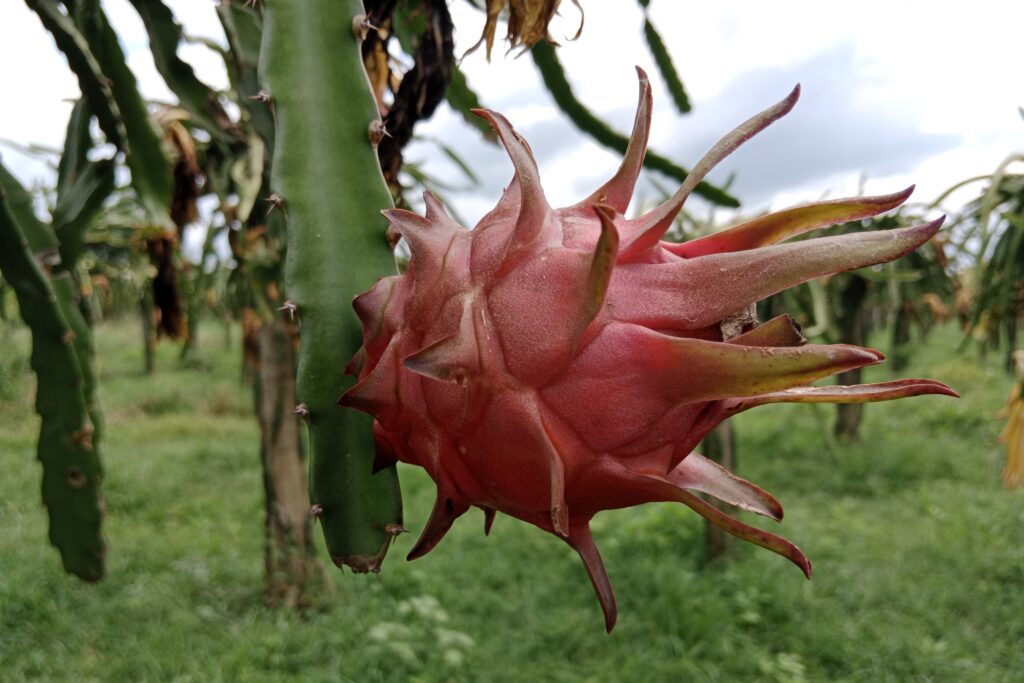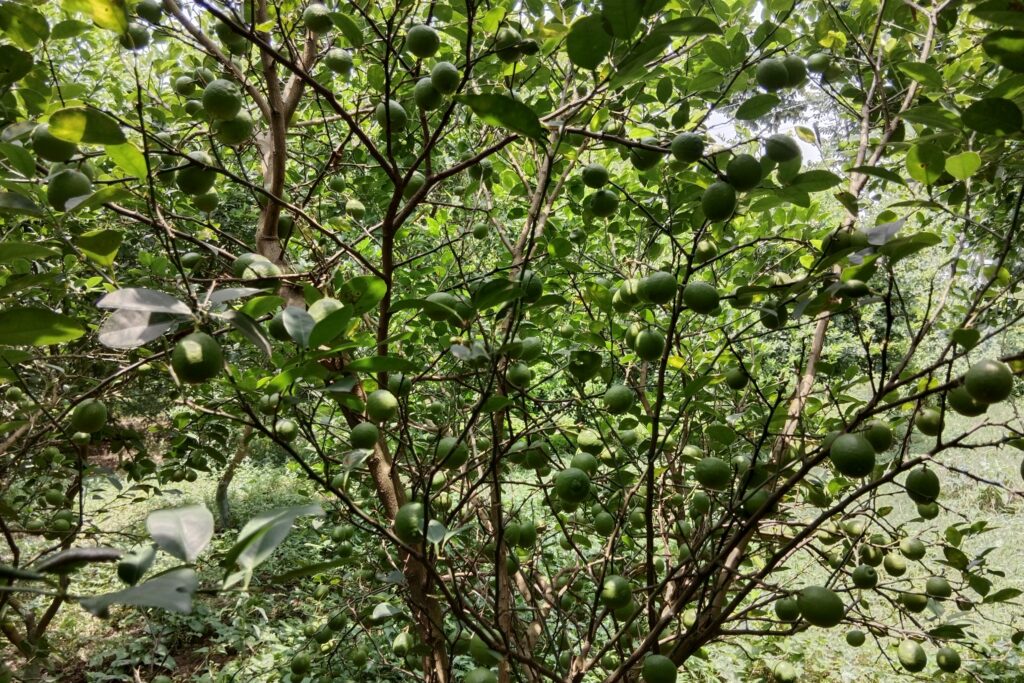Chickpea Farming
Chickpea farming is a highly profitable agricultural activity, with a chickpea farming profit per acre of NRs. 85,000, making it an economically viable venture. From an estimated yield of 600 kg per acre and a market price of NRs. 200 per kg, the total income amounts to NRs. 120,000 per acre. The total cost of cultivation, which includes land preparation, seeds, fertilizers, irrigation, weed control, pest and disease management, harvesting, and miscellaneous expenses, is NRs. 35,000 per acre. This significant profit margin demonstrates the potential of chickpea farming as a lucrative option when managed effectively with proper practices and resources.
Land Preparation
The process begins with an initial deep plowing to a depth of 15-20 cm after harvesting the previous crop (typically monsoon rice or maize), which incorporates crop residues, exposes soil pests and diseases, and improves soil structure. This is followed by harrowing the field 2-3 times to break down soil clods, pulverize the soil, level the field, and incorporate pre-emergence herbicides. Subsequently, planking or rolling after the final harrowing helps conserve residual soil moisture, a critical factor for rainfed (kabuli) chickpea cultivation. Finally, it is essential to ensure the field is completely free from weeds at the time of planting.
Soil Type
Chickpeas thrive best in well-drained sandy loam to loam soils but can tolerate clay loam and heavy black soils (Vertisols) if drainage is adequate, as waterlogging can cause root rot and plant death. The optimal soil pH range is 6.0 to 7.0 (neutral to slightly acidic), with tolerance up to 8.0, although salinity and alkalinity significantly reduce yields. Heavy clay soils prone to waterlogging, very sandy soils with low water-holding capacity, and saline or sodic soils should be avoided for successful cultivation.
Climatic Requirements
| Parameter | Requirement | Notes/Specifics |
| Season | Primarily cool season (Rabi) | Grown in warm seasons in some temperate zones. |
| Temperature | ||
| • Optimal Growth | 18°C to 25°C | |
| • Germination | Minimum: 7°C Optimal: 25°C to 35°C | |
| • Flowering & Pod Setting | 15°C to 20°C | Critical: Avoid frost during this stage. |
| • Maturity | 25°C to 30°C | Warm, dry conditions are ideal. |
| Rainfall | 600-1000 mm annually is suitable | • Critical moisture needs during the vegetative stage. • Desi types are more drought-tolerant than Kabuli. • Risk: Rain during flowering/podding increases disease. • Essential: Dry weather for ripening & harvest. |
| Light | Long-day plant for flowering | Sensitive to photoperiod, specific requirements vary by cultivar. |
Major Cultivars
| Aspect | Desi Type | Kabuli Type |
| Global Share | ~80-85% | ~15-20% |
| Seed Traits | • Smaller, angular • Dark-colored (brown/black/green/yellow) • Thick seed coats | • Larger, ram-head shaped • Beige/light-colored • Thin seed coats |
| Plant Traits | • Bushy growth habit • More drought/disease tolerant • Higher protein content | • Taller plants, less bushy • Requires better fertility/moisture • Higher market value |
| Adaptability | Better suited to rainfed conditions | More susceptible to stresses (drought/disease) |
| Examples | Pusa 372, Pusa 256, Annigeri, JG 11 | Pusa 1003, BG 1053, CDC Frontier, CDC Orion |
Seed Rate
The seed rate for chickpeas varies with type, seed size, germination percentage, and planting method, with Desi chickpeas requiring 70-80 kg per acre and Kabuli chickpeas needing 45-60 kg per acre due to their larger size. Higher seed rates are necessary in less precise methods like broadcasting to ensure uniform distribution. Seed priming by soaking for 4-5 hours in water and treating seeds with Trichoderma (6 g/kg), Vitavax (1 g/kg), and Rhizobium culture (200 g/10 kg seed) enhances germination and crop performance.

Planting
a) Planting Season
Depending on the climate, chickpeas are planted at different times of year. After the monsoon, when soil temperatures drop, they are sown in tropical and subtropical areas during the Rabi season (October–November), with harvest taking place in February–April. When there is no longer a chance of frost, chickpeas are sown in the spring (March–May) in temperate climates and harvested in August–September.
b) Spacing
| Spacing Type | Desi Chickpea | Kabuli Chickpea | Notes |
| Row to Row | 30 cm | 45 cm | Wider spacing for Kabuli due to larger plant size |
| Plant to Plant | 10 cm | 15 cm |
c) Planting Method
Chickpeas can be planted using various methods based on the scale of cultivation. The seed drill method is the most efficient and common for large areas, ensuring uniform depth, spacing, and seed rate, and can be operated using a tractor or bullock. Broadcasting involves scattering seeds uniformly and lightly covering them with planking or harrowing, but it requires a higher seed rate and provides less uniformity. The behind-plow method, also known as Pora or Desi Paddle, involves manually dropping seeds into furrows opened by a plow and covering them in the subsequent pass.
d) Number of Plants per Acre
Desi: 134,900 plants/acre.
Kabuli: 59,955 plants/acre.
Intercropping
| Category | Details |
| Suitable crops | Cereals: Wheat, Barley, Sorghum (chickpea planted in between rows). |
| Oilseeds: Mustard, Linseed, Safflower. | |
| Pulses: Lentil, Linseed. | |
| Popular combination | Chickpea + Mustard, Chickpea + Barley, Chickpea + Linseed, Chickpea + Safflower. |
Irrigation
| Aspect | Details |
| Critical Stages | Branching, Flowering, Pod Development |
| Frequency | 1-3 irrigations (soil & rainfall dependent) |
| 1st Irrigation | 35-40 DAS: Branching/Pre-flowering |
| 2nd Irrigation | 60-65 DAS: Pod Development |
| Primary Method | Furrow irrigation (most efficient) |
| Avoid | • Flood irrigation (causes waterlogging) • Waterlogging at any stage • Over-irrigation during flowering (↑ disease risk) • Irrigation 10-15 days pre-maturity |
Fertilizer and Manure
| Component | Recommendation & Application Details |
| Soil Testing | Essential for precise nutrient recommendations |
| Nitrogen (N) | • Fixes atmospheric N via Rhizobium • Inoculate with Mesorhizobium ciceri (new/low-fertility fields) • Starter: 6-8 kg N/acre at planting |
| Phosphorus (P) | • Most critical nutrient • Apply 16-20 kg P₂O₅/acre at planting • Use SSP/DAP placed near the seed • Promotes roots, flowering, and pod set |
| Potassium (K) | Apply 8-12 kg K₂O/acre only if the soil test indicates a deficiency |
| Sulfur (S) | • 8 kg S/acre • Applied via SSP or Gypsum • Essential for protein synthesis |
| Micronutrients | • Zinc deficiency is common (high pH soils) • Apply 4-5 kg ZnSO₄/acre every 2-3 years |
| Organic Manure | • FYM/Compost: 2-4 tonnes/acre • Apply during land preparation • Benefits: Improves soil structure, water retention, and slow-release nutrients |
Weed Control
Weed control in chickpea cultivation is crucial during the first 40-60 days after sowing, until canopy closure. Pre-plant or pre-emergence herbicides such as Pendimethalin (1 liter per acre) or Fluchloralin (600 ml per acre) can be applied to effectively manage germinating weeds and ensure optimal crop growth.
Pest and Disease Management
Common Pests
a) Pod Borer (Helicoverpa armigera)
The pod borer (Helicoverpa armigera) is one of the most devastating pests in chickpea cultivation, as its larvae bore into pods and seeds, causing significant yield losses. Effective management involves an integrated approach, including the use of pheromone traps to monitor and control adult populations, and sprays of NPV (Nuclear Polyhedrosis Virus) or neem-based insecticides to target larvae.
Biological insecticides such as Spinosad and Emamectin benzoate are also effective and environmentally friendly options. Chemical insecticides should be used only as a last resort, and it is essential to rotate modes of action to prevent resistance development and ensure long-term control.
b). Cutworms
Cutworms are destructive pests that sever seedlings at ground level, causing significant damage to crops. Effective control measures include deep plowing to expose and eliminate larvae, the application of soil-based insecticides to target the pest, and the use of poison baits to reduce their population and protect seedlings.
c). Aphids
Aphids are sap-sucking pests that weaken plants and transmit viruses, leading to reduced crop health and yield. Control measures include encouraging natural predators like ladybugs and lacewings, applying neem-based insecticides for eco-friendly management, and using systemic insecticides such as Imidacloprid at 1ml/liter water for effective control in severe infestations.
Common Diseases
a). Fusarium Wilt
A soil-borne fungus called Fusarium wilt causes plants to wilt, turn yellow, and eventually die, which drastically lowers crop yield. Growing resistant cultivars is the best method to control this illness. Crop rotation with non-host species for four to five years, soil solarization to reduce fungal levels, and seed treatment with fungicides such as Azoxystrobin (10 ml per 15 liters of water) to protect against early infections are further preventive measures.

b). Ascochyta Blight
Chickpea plants are susceptible to Ascochyta blight, a fungal disease that causes patches on leaves, stems, and pods. It is most common in cool, rainy weather. If this disease is not adequately controlled, it can drastically lower crop quality and output. Cultivating resistant cultivars and using disease-free seeds is the most dependable control method. In order to lower the danger of infection, seeds can be treated with fungicides like Thiram or Carbendazim. To control the disease and reduce crop damage during severe outbreaks, foliar fungicides such as carbendazim or chlorothalonil might be used.
c) Botrytis Grey Mold
A fungal disease called Botrytis Grey Mold (BGM) is typified by the growth of fluffy grey mold on chickpea plants, which thrives in chilly, damp environments. Wider plant spacing can enhance air circulation and lower humidity levels around plants. Excessive nitrogen fertilization can encourage dense foliage that facilitates the spread of disease. Foliar fungicides such as carbendazim or mancozeb can be used to suppress the disease and safeguard the crop in the event of an infection.
d) Root Rots
Root rots in chickpeas are commonly associated with waterlogged conditions and poor soil drainage, leading to significant damage to the plant’s root system and stunted growth. Effective control measures include improving soil drainage to prevent waterlogging, practicing crop rotation to break the disease cycle, avoiding deep planting that can exacerbate root stress, and treating seeds with appropriate fungicides before planting to protect against early infections.
Harvesting
Harvest chickpeas when 90-95% of pods turn yellow or brown, seeds are hard, and moisture content is 12-15% to ensure quality and yield. Early harvesting causes immature seeds, while delays lead to pod shattering and pest damage. Manual harvesting involves cutting plants at ground level, sun-drying for 5-7 days, and threshing by beating or using small threshing.
Combine harvesters are suitable for large-scale farms with uniform maturity and 12-14% moisture, requiring careful settings to avoid seed damage. Post-harvest, seeds are dried to 10-12% moisture, cleaned, graded, and stored in cool, dry, rodent-proof conditions, using insecticides like Malathion or hermetic storage to prevent infestation.
Cost of Investment per acre for Chickpea farming
| S.N. | Categories | Cost for Local Variety (NRs.) |
| 1 | Land Preparation (Plowing) | 10,000 |
| 2 | Seed per Acre | 2,000 |
| 3 | Seed Sowing | 1,000 |
| 4 | Fertilizers and Manure | 5,000 |
| 5 | Irrigation | 5,000 |
| 6 | Weed Control (Pre & Post-Emergence) | 1,000 |
| 7 | Pest & Disease Control | 3,000 |
| 8 | Harvesting | 5,000 |
| 9 | Miscellaneous Costs | 3,000 |
| Total Cost | 35,000 |
Income from one acre of chickpea farming
| Particulars | Estimated Yield/Acre (Kg) | Market Price (NRs./Kg) | Total Income (NRs.) |
| Chickpea Yield | 600 | 200 | 120,000 |
Analysis of chickpea farming profit per acre
Chickpea farming generates a total income of NRs. 120,000 per acre, with a total cost of NRs. 35,000, resulting in a net profit of NRs. 85,000, showcasing its high profitability and economic viability.


